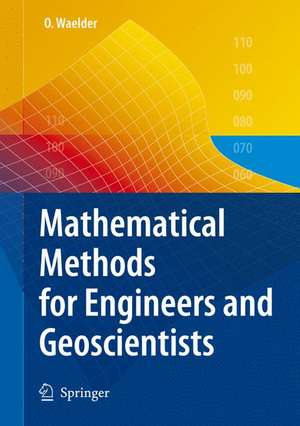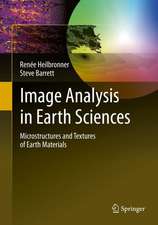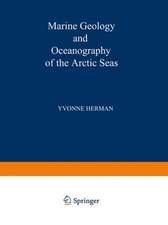Mathematical Methods for Engineers and Geoscientists
Autor Olga Waelderen Limba Engleză Hardback – 11 feb 2008
| Toate formatele și edițiile | Preț | Express |
|---|---|---|
| Paperback (1) | 381.81 lei 6-8 săpt. | |
| Springer Berlin, Heidelberg – 19 oct 2010 | 381.81 lei 6-8 săpt. | |
| Hardback (1) | 388.13 lei 6-8 săpt. | |
| Springer Berlin, Heidelberg – 11 feb 2008 | 388.13 lei 6-8 săpt. |
Preț: 388.13 lei
Nou
Puncte Express: 582
Preț estimativ în valută:
74.27€ • 77.75$ • 61.45£
74.27€ • 77.75$ • 61.45£
Carte tipărită la comandă
Livrare economică 05-19 aprilie
Preluare comenzi: 021 569.72.76
Specificații
ISBN-13: 9783540752981
ISBN-10: 3540752986
Pagini: 188
Ilustrații: VIII, 176 p.
Dimensiuni: 155 x 235 x 16 mm
Greutate: 0.42 kg
Ediția:2008
Editura: Springer Berlin, Heidelberg
Colecția Springer
Locul publicării:Berlin, Heidelberg, Germany
ISBN-10: 3540752986
Pagini: 188
Ilustrații: VIII, 176 p.
Dimensiuni: 155 x 235 x 16 mm
Greutate: 0.42 kg
Ediția:2008
Editura: Springer Berlin, Heidelberg
Colecția Springer
Locul publicării:Berlin, Heidelberg, Germany
Public țintă
ResearchCuprins
From a Problem to Its Solution by Mathematical Modeling.- Some Real Problems and Their Solutions.- Practical Examples for Mathematical Modeling.- Some Code Examples.- Conclusion.
Recenzii
From the reviews:
"It introduces into mathematical modelling and ‘can assist in the education of engineers and geoscientists by helping them to understand the usefulness of diverse mathematical approaches.’ … The book is carefully written and can be recommended for those readers who have to use some mathematics for their problems and … who also would like to understand the process of mathematical modelling." (Wolfgang Näther, Zentralblatt MATH, Vol. 1137 (15), 2008)
"In this small volume, Wilder ... presents some modern mathematical techniques to solve problems arising in engineering and geosciences in a lucid, easy-to-understand style. ... Contains a useful subject index and a bibliography with list of books and research papers for additional reading. Summing Up: Highly recommended. Upperdivision undergraduates through professional engineers and geoscientists." (D. V. Chopra, Choice, Vol. 46 (3), November, 2008)
"This is a short and concise account of geo-statistical techniques and is aimed at students of engineering and the geosciences. … provide a simple and relatively complete description of commonly used geostatistical (and engineering) models in a way that is nonthreatening to math avoiders and useful for non-specialists." (Neville Fowkes, Siam Review, Vol. 51 (1), 2009)
"Mathematical Methods for Engineers and Geoscientists aims at providing useful mathematical tools to students and practitioners in the earth sciences, with an emphasis on problem solving." (Bernard Giroux, Mathematical Geosciences, Vol. 41, 2009)
"It introduces into mathematical modelling and ‘can assist in the education of engineers and geoscientists by helping them to understand the usefulness of diverse mathematical approaches.’ … The book is carefully written and can be recommended for those readers who have to use some mathematics for their problems and … who also would like to understand the process of mathematical modelling." (Wolfgang Näther, Zentralblatt MATH, Vol. 1137 (15), 2008)
"In this small volume, Wilder ... presents some modern mathematical techniques to solve problems arising in engineering and geosciences in a lucid, easy-to-understand style. ... Contains a useful subject index and a bibliography with list of books and research papers for additional reading. Summing Up: Highly recommended. Upperdivision undergraduates through professional engineers and geoscientists." (D. V. Chopra, Choice, Vol. 46 (3), November, 2008)
"This is a short and concise account of geo-statistical techniques and is aimed at students of engineering and the geosciences. … provide a simple and relatively complete description of commonly used geostatistical (and engineering) models in a way that is nonthreatening to math avoiders and useful for non-specialists." (Neville Fowkes, Siam Review, Vol. 51 (1), 2009)
"Mathematical Methods for Engineers and Geoscientists aims at providing useful mathematical tools to students and practitioners in the earth sciences, with an emphasis on problem solving." (Bernard Giroux, Mathematical Geosciences, Vol. 41, 2009)
Notă biografică
In 1970 Olga Waelder was born in Moscow. She began her studies at the Technical University for Electronics and Mathematics in Moscow in 1987 from whence she received her degree in applied mathematics in 1993. From 1996 until 1999 she furthered her studies at the Technical University Mining Academy in Freiberg (Germany) from whence she received a degree in mathematics. Between 2001 and 2004 she was a research assistant at the Institute for Cartography, Dresden Technical University. In 2003 she began lecturing mathematical cartography. She continued her post doctorate studies there in 2004 and since 2005 has been a lecturer for adjustment theory.
Textul de pe ultima copertă
This book introduces and explains classical and modern mathematical procedures as applied to the real problems confronting engineers and geoscientists. Written in a manner that is understandable for students across the breadth of their studies, it lays out the foundations for mastering difficult and sometimes confusing mathematical methods. Arithmetic examples and figures fully support this approach, while all important mathematical techniques are detailed. Derived from the author's long experience teaching courses in applied mathematics, it is based on the lectures, exercises and lessons she has used in her classes. Also, the explanations and discussions in the book are inspired by the most frequently-asked questions of students, graduates and professionals.
Caracteristici
Arithmetical concepts rendered understandable for the target audience Complete with all necessary supporting calculations








